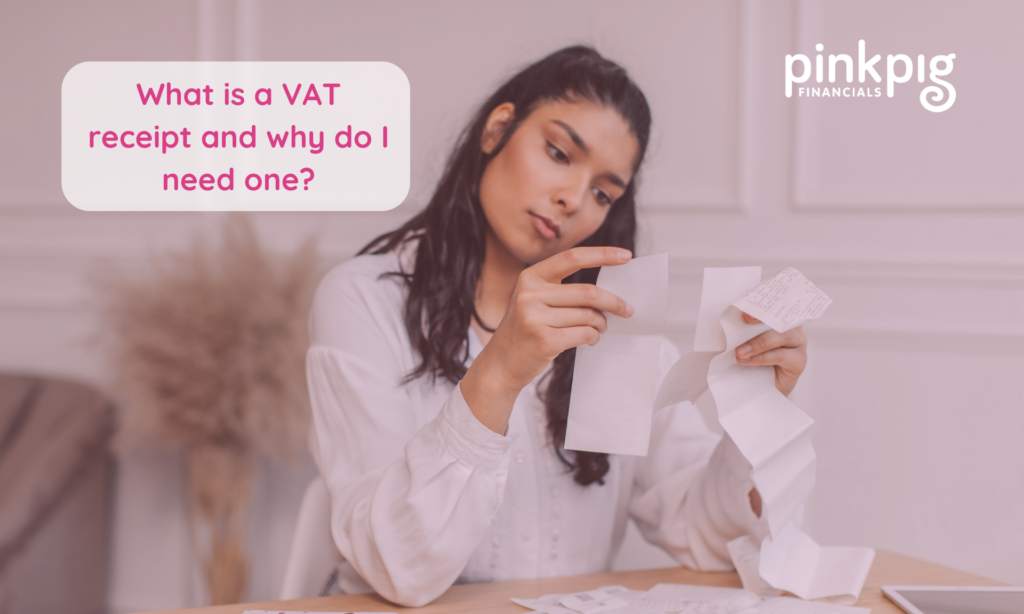If your business is VAT registered, you can claim back the VAT on any goods or services you purchase as a business expense.
But, in order to reclaim this VAT, you do need to have a valid VAT receipt or invoice.
We’ll refer to VAT invoice throughout this blog – but we’re talking receipts and invoices here.
What should a valid VAT invoice have on it?
A full VAT invoice needs to have the following information on it;
- Customer’s business name and address
- Supplier’s business name and address
- Supplier’s VAT number
- Invoice date
- Tax point (date of supply)
- Invoice number
- Description of goods or services
- Price and quantities for each item
- Total before VAT
- VAT rate per item and amount
- Total including VAT
If your purchase comes to a total of under £250 then you only need a ‘simplified invoice’.
However, even a simplified invoice must show certain information and needs to contain:
- Supplier’s business name, address and VAT number
- Invoice number
- Tax point (date of supply)
- Description of goods or services
- VAT rate per item and amount
- Total amount including VAT
If you don’t have a valid VAT invoice then you can’t reclaim the VAT (though you can always go back to a supplier and ask for one)
If you can’t produce a VAT invoice when HMRC asks for it, they will make you pay back the VAT you’ve claimed on your VAT return. They may also charge you interest, and possibly penalties for making errors on your VAT return.
If you didn’t receive a VAT invoice at the point of sale you can always ask your supplier for one later. As a VAT registered business, they should also have a copy for their records anyway!
Do note, the following do not qualify as valid VAT invoices:
- Delivery notes
- Proforma invoices
- Statements
- Order confirmations
- Email confirmations
And you therefore cannot use these to reclaim your VAT.
Make it easy on yourself by using Dext to keep a record of your expenses
At PPF Dext is probably our favourite app (after Xero of course!). We love it so much that it is automatically included in all of our limited company packages.
With just a few clicks you can take a picture of your VAT invoice as soon as you get it. Dext then extracts all that information we’ve mentioned above and sends it across to Xero, along with a picture of the receipt.
So, if you do receive your receipts by email, either as a pdf from a supplier (or in the body of the email, like Amazon) you can just forward on to your Dext via the email-in address given to you when you get set up, and let Dext do the rest.
Invoices and records have to be kept for at least 6 years
HMRC will expect to see documentation of your purchases in the event of a VAT inspection.
Thankfully, as you can imagine, HMRC now welcomes scanned and electronic copies, which is all the more reason to use Dext! If you send your invoices to Dext, those electronic copies are saved in Xero and you no longer have any need to keep all that paper.
There is so much more that Xero can do to make business accounting simpler, and plenty of apps like Dext designed to make taxes (and all the other stuff) easier.
Not a Client Yet? Let’s Change That!
If you’re not yet part of the PPF family, we’d love to welcome you. Our team is here to take the stress out of your finances so you can focus on what matters most.
We’ll handle your accounts, maximise your time, and provide expert guidance to help you achieve your goals.
Complete our quick questionnaire to book in a free Discovery Call
Want tax tips and advice? Check out PPF on YouTube

